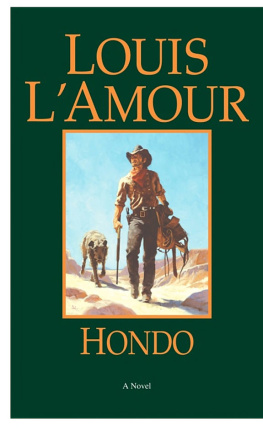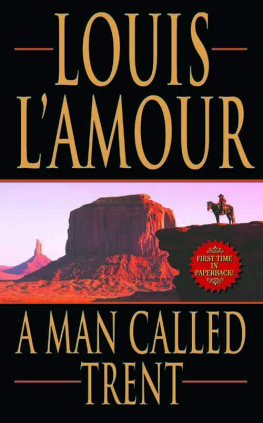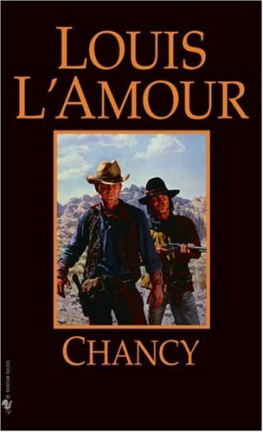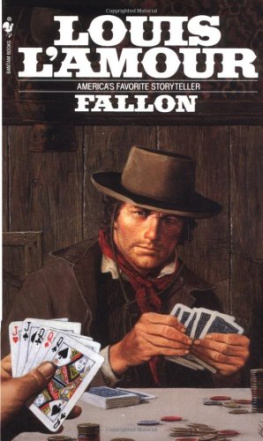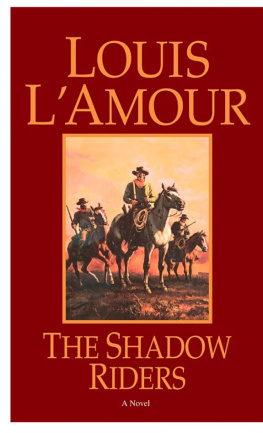Louis LAmour - The Trail to Crazy Man
Here you can read online Louis LAmour - The Trail to Crazy Man full text of the book (entire story) in english for free. Download pdf and epub, get meaning, cover and reviews about this ebook. year: 2005, publisher: Bantam, genre: Detective and thriller. Description of the work, (preface) as well as reviews are available. Best literature library LitArk.com created for fans of good reading and offers a wide selection of genres:
Romance novel
Science fiction
Adventure
Detective
Science
History
Home and family
Prose
Art
Politics
Computer
Non-fiction
Religion
Business
Children
Humor
Choose a favorite category and find really read worthwhile books. Enjoy immersion in the world of imagination, feel the emotions of the characters or learn something new for yourself, make an fascinating discovery.

- Book:The Trail to Crazy Man
- Author:
- Publisher:Bantam
- Genre:
- Year:2005
- Rating:4 / 5
- Favourites:Add to favourites
- Your mark:
- 80
- 1
- 2
- 3
- 4
- 5
The Trail to Crazy Man: summary, description and annotation
We offer to read an annotation, description, summary or preface (depends on what the author of the book "The Trail to Crazy Man" wrote himself). If you haven't found the necessary information about the book — write in the comments, we will try to find it.
The Trail to Crazy Man — read online for free the complete book (whole text) full work
Below is the text of the book, divided by pages. System saving the place of the last page read, allows you to conveniently read the book "The Trail to Crazy Man" online for free, without having to search again every time where you left off. Put a bookmark, and you can go to the page where you finished reading at any time.
Font size:
Interval:
Bookmark:
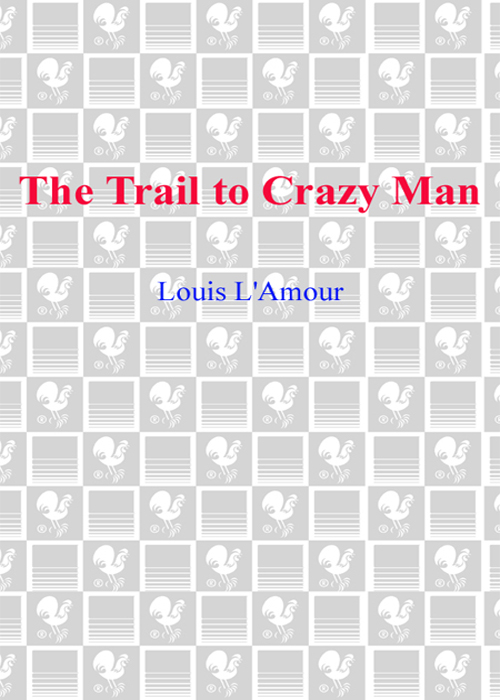
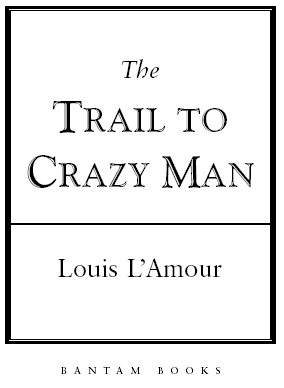
Contents
____________
Foreword

T HE TRAIL TO Crazy Man contains three novel-length stories I wrote not quite four decades ago for publication in pulp magazines long before my first book was released. (I had been working on a novel of the sea when I went into the army for World War II, but it was never completed.) Longer on action than on characterization or background, these magazine novels are chapters from my early writing history. In creating them, I became so involved with my characters that their lives were still as much a part of me as I was of them long after the issues in which they appeared became collectors items. Pleased as I was about how I brought the characters and their adventures to life in the pages of the magazines, I still wanted the reader to know more about my people and why they did what they did.
So, years later, after establishing myself as an author of books, I went back and revised and expanded these magazine works into full-length novels I published as paperbacks with different titles.
The stories in this book have long been the subject of great speculation by my avid readers. People are curious about how my paperback novels evolved from my magazine novels and have very much wanted to read these early versions that Ive collected here in book form for the very first time.
The Trail to Crazy Man, the lead story, begins at sea, as many American life stories did, and proceeds to the Rocky Mountain region. It is the original telling of the novel Crossfire Trail. Riders of the Dawn later became Silver Canyon in a somewhat longer version. Showdown on the Hogback was slightly expanded to Showdown at Yellow Butte.
The pulp action magazines in which these stories were first published were available on every newsstand throughout the twenties, thirties, and forties. They offered readers a wide variety of stories, from western, mystery, romance, science fiction, air, and sea backgrounds. They also offered a substantial market for a working writer. Many of us honed our skills in the pulps, often writing under pseudonyms, before going on to other genres or literary forms. The essentials demanded by our editors were action and color, but, above all, one had to tell a story with a beginning, a middle, and an end. And the story had to move.
In those years, before paperback books and then television rendered them obsolete seemingly in a matter of days, the action-adventure magazines could be found in every bunkhouse or ships forecastle, being read by the very men of whom the stories were told.
For a writer who had to make a living from his work, they were a rich lode. The pay was small, but if he could write enough he might make ends meet, even though the payment usually started at a half cent per word and rarely got above two cents a word.
Fortunately, I had lived a life of action and knew the sort of men and women I was to write about. I had been over the country, worked in the mines and lumber camps, on ranches and construction outfits, and knew the people and the language. Much of what I was to write about had happened to me, so I knew how men felt and how they reacted.
One does not suddenly become a good writer. No matter how much innate talent one has, skills must be developed and then sharpened by practice. As I have said elsewhere, a writer never knows enough and is never good enough.
The reading public is much more aware than some imagine, and among them are experts in almost any field one can name.
No field of writing demands more intimate knowledge than stories of the frontier. Conditions were changing rapidly: towns grew and died. New styles of rifles and pistols were constantly coming into being. Saddles were always being altered, and the ropes used in California were different from those used in Texas or Montana. Clothing changed, too, from any castoff or otherwise available garment to apparel designed for specific conditions and types of work.
Frontier terrain varied considerably, and nothing could be taken for granted. To speak of desert is not enough, for a desert in Arizona can be much different from one in California.
Oddly enough, many people do not consider California to be western, yet only Texas surpassed it in numbers of cattle on the range, and no greater ropers existed than the Californios with ropes so long that few Texans would attempt to use them. Los Angeles was as wild and rough as Dodge City and Deadwood.
A writer must know and understand to interpret, and the greatest of writers are those who understand human nature the best. For, in the last analysis, stories are about people, their ideas, emotions, characteristics, and how they react to stress.
Research is essential, and I have always done my own. I have no staff, not even a secretary. If mistakes are made, they are my mistakes, to be blamed upon no one else. I do not feel that I should trust research that has been filtered through somebody elses mind. I want to find the facts myself, weigh them with my own experience, and share them with you in stories like those you are about to read.
AUTHORS NOTE
____________
The Trail to Crazy Man
IT WAS CRAZY Woman in the original story I turned in, but the editor decided he preferred to call it Crazy Man. I made no protest, as I was glad to sell the story and get the check that resulted. Crazy Woman Creek is in the Hole-in-the-Wall Country not far from the town of Kaycee, where Nate Champion cashed in his checks.
For many years this was the heart of Sioux Country, and later a hangout for outlaws who rode up the Middle Fork of the Powder River and through the Hole-in-the-Wall into the country beyond. The ranchers there were on friendly terms with the outlaws of the Butch Cassidy Wild Bunch.
As with the Charles Rodney of this story, many a man rode away from home and never returned. Traveling was hard and always dangerous. If a man was carrying money, he had to ride with care, as only too many were prepared to take it from him.
There are some baking-powder cans filled with gold cached someplace up on the Crazy Woman, but nobody knows exactly where, or even where to start looking.
THE TRAIL TO CRAZY MAN
__________________
CHAPTER I
Shanghaied
I N THE DANK, odorous forecastle, a big man with wide shoulders sat at a scarred mess table, his feet spread to brace himself against the roll of the ship. A brass hurricane lantern, its light turned low, swung from a beam overhead, and in the vague light the big man studied a worn and sweat-stained chart.
There was no sound in the forecastle but the distant rustle of the bow wash about the hull, the lazy creak of the square-riggers timbers, a few snores from sleeping men, and the hoarse, rasping breath of a man who was dying in the lower bunk.
The big man who bent over the chart wore a slipover jersey with alternate red and white stripes, a broad leather belt and a brass buckle, and coarse jeans. On his feet were woven leather sandals of soft, much-oiled leather. His hair was shaggy and uncut, but he was clean-shaven except for a mustache and burnsides.
The chart he studied showed the coast of northern California. He marked a point on it with the tip of his knife and then checked the time with a heavy gold watch. After a swift calculation, he folded the chart and replaced it in an oilskin packet with other papers and tucked the packet under his jersey, above his belt.
Next pageFont size:
Interval:
Bookmark:
Similar books «The Trail to Crazy Man»
Look at similar books to The Trail to Crazy Man. We have selected literature similar in name and meaning in the hope of providing readers with more options to find new, interesting, not yet read works.
Discussion, reviews of the book The Trail to Crazy Man and just readers' own opinions. Leave your comments, write what you think about the work, its meaning or the main characters. Specify what exactly you liked and what you didn't like, and why you think so.

